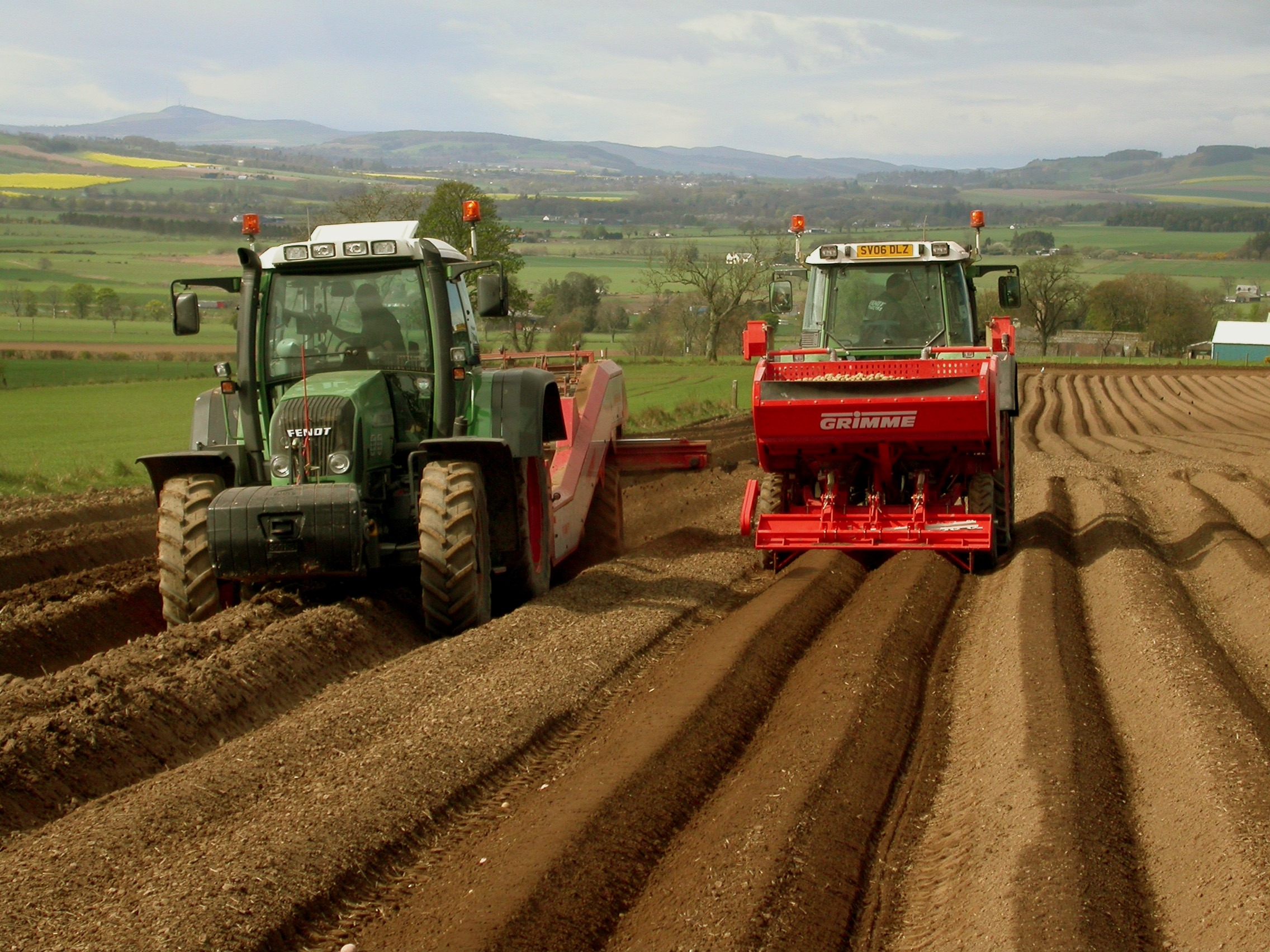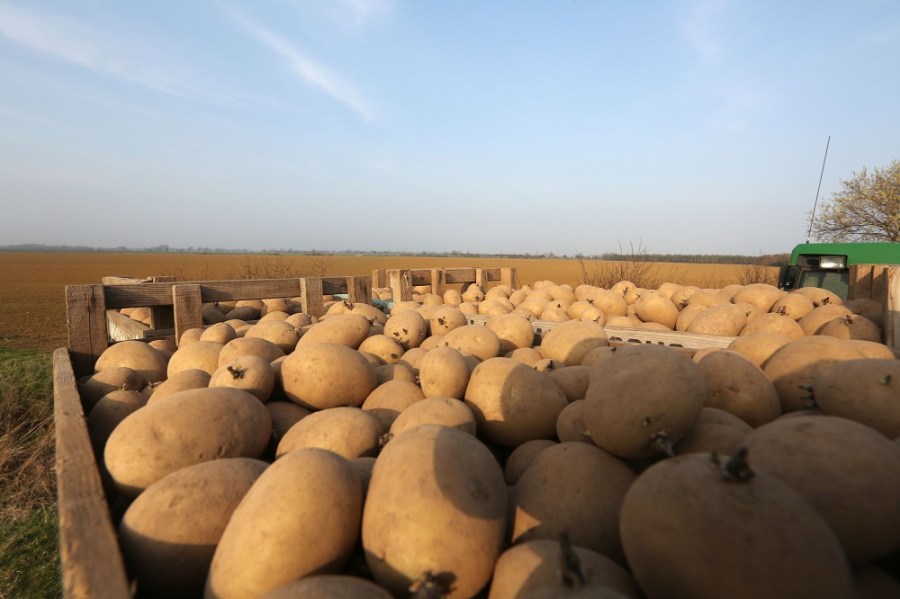Extreme weather variations played havoc with potato crops in 2018, yet Hutchinsons trials in Suffolk still generated some valuable findings that could help shape agronomy next season. CPM reports.
There were still some useful lessons in spite of the dry conditions.
By Paul Spackman
The 2017/18 season may be one to forget for many potato growers, but if more unpredictable weather, pest and disease threats are becoming the norm then it’s something to learn from rather than consign to the memory banks, believes Hutchinsons root crop manager Darryl Shailes.
The agronomy company’s trials at its Fenland Potato Demonstration in Suffolk were not immune from the cold, late start to the season followed by summer drought, but they still revealed interesting results across several agronomy areas. It was the second year of research at AL Lee Farming Company’s Friesland Farm near Mildenhall, which was established specifically to examine the unique management required on the deep, organic black soils of the Fens.

The trials showed the importance of protecting chits on the planter.
“Even the best irrigated farms and forgiving soils struggled with water availability last season and we found a lot of field effects in our trials were compromised by lack of rain,” says Darryl Shailes. “But there were still some useful lessons in spite of the dry conditions, which tie in with the need to manage consistency and reduce variation in potato crops through a variety of options.”
Managing potato cyst nematode (PCN) with nematicides and varietal resistance is a focal point for the Fenland trials and although results were not as pronounced as in 2017, there was a clear correlation with previous findings.
One trial looking at the effect of four nematicide treatments on marketable yield and PCN multiplication in replicated plots of Maris Peer again found a benefit from nematicides in helping reduce PCN build-up in the soil over the season.
The initial pre-planting PCN population of around 100 eggs/g of soil was twice as high as in 2017, but egg counts on treated plots after harvest revealed all treatments helped manage PCN. This was indicated by all treatments having a Pf:Pi ratio of less than 1.5 (final population divided by the initial population), compared with a Pf:Pi of over 2 in untreated.
“Nematicides did help keep a lid on PCN population in the soil compared with the untreated, although there wasn’t any significant yield increase from nematicides in 2018, with all plots in the 20-25t/ha range,” adds John Keer of Richard Austin Agriculture.
“That’s probably because nematode motility was reduced in the very dry conditions, while the deep, organic soils added an extra layer of tolerance to the effects of PCN.”
A second trial examining varietal tolerance and resistance highlighted the importance of variety choice in managing PCN. The biggest difference was in the effect of variety resistance, or the crop’s ability to disrupt cyst formation through the season. The most effective varieties at doing this, with a Pf:Pi ratio of less than 1, were similar to last year and included Eurostar, Performa, Camel and Arsenal. Those that resulted in the greatest build-up of PCN again included Cara, Markies, Agria and Sagitta.
But John Keer warns different types of Globodera pallida could be present in the field, so variety resistance was not necessarily the only answer.
“Not all G. pallida are the same, so there’s a real need for better understanding of the pathotypes present in the field.”
Darryl adds it’s vital to protect genetics in resistant varieties with a spectrum of PCN control measures, rather than rely on any single element. Vigorous (tolerant) varieties generally yielded slightly better than less tolerant types, although all were compromised by dry weather.
Heat stress also affected final yield results in the seed trial, which examined differences in chronological seed age and physical ageing methods. But there were still some useful findings that will be explored further in 2019, comments local Farmacy agronomist Stefan Williams.
In particular, there was a clear yield penalty where chits of Scottish Maris Piper seed were intentionally damaged at planting. These plots were slower to emerge and yielded just 22-23t/ha on average, well below the 30-35t/ha from plots chitted for four or eight weeks with chits left intact.
“Removing chits means there’s no apical dominance and prompts a shock reaction where tubers put out more stems and use a lot of energy doing so. It reinforces the need to protect them on the planter,” explains Stefan.
Generally, the most effective physiological ageing treatment was the four-week chit, which showed the most consistent and highest yields in both ‘old’ and ‘young’ seed lots tested. ‘Old’ seed had a 50% emergence date of 5 May, one month before the younger seed (6 June).
“Historically the farm standard has been to chit seed for eight weeks, but we may change that in future,” he adds.
Stefan highlights that older seed out-performed younger seed in all physical seed age trials. He also recognised the impact delayed planting had on yields, particularly Maris Piper which requires a long growing season.
“There’s a strong case for sowing Piper earlier, so we might trial different planting dates next season to see if there’s a benefit from giving it longer in the ground.”
Other trial highlights
The herbicides trial again showed clear differences in the impact of post-emergence products on individual varieties.
“It’s early days for this research, but there are signs that in some situations you might be better to risk a bit of crop damage than suffer the yield penalty from high levels of redshank or other weeds,” says Darryl. “There’s limited screening of new varieties by herbicide manufacturers, so our aim is to eventually equip our agronomists with a traffic light system for use in the field based on our experience and other research.”
In a separate trial, Farmacy agronomist John Chamberlain examined the effects of the latest seed treatments. He found a reduction in black dot incidence across all seed treatment and in-furrow options tested, with some anecdotal evidence of higher stem numbers from SDHI chemistry.
“Higher stem numbers generally mean higher yield, but in this trial, there was no significant effect which was probably due to the negating effect of the dry season. I think there may still be a case for using chemistry to manipulate stem numbers, but the choice you make depends on the variety and end market requirements,” says John.
Black scurf, caused by the Rhizoctonia solani fungus, was found at relatively low level on a high proportion of tubers, which he suggests could be due to the unusual weather and a lot of secondary growth. “Tubers were clean when planted and there were no signs of disease at the open day in July.”
Herbicide trial summary
- Herbicide tank mixes tended to produce greater crop effects.
- Worst-affected varieties were similar to 2017 – Sagitta (highest chlorosis), Markies (highest necrosis).
- Scorch severity did not necessarily relate to vigour loss e.g. Agria did not show much scorch but vigour was affected more than some others.
- Soil type and weather had a major impact on crop resilience to herbicide effects (deep organic soils are more forgiving than mineral soils).
- Increasing water volume generally reduced crop damage.




